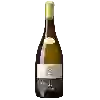
Cave de TainTalent de Vigneron Crozes-Hermitage
In the mouth this red wine is a powerful.
This wine generally goes well with poultry, beef or game (deer, venison).
Taste structure of the Talent de Vigneron Crozes-Hermitage from the Cave de Tain
Light | Bold | |
Smooth | Tannic | |
Dry | Sweet | |
Soft | Acidic |
In the mouth the Talent de Vigneron Crozes-Hermitage of Cave de Tain in the region of Rhone Valley is a powerful.
Food and wine pairings with Talent de Vigneron Crozes-Hermitage
Pairings that work perfectly with Talent de Vigneron Crozes-Hermitage
Original food and wine pairings with Talent de Vigneron Crozes-Hermitage
The Talent de Vigneron Crozes-Hermitage of Cave de Tain matches generally quite well with dishes of beef, lamb or game (deer, venison) such as recipes of wild boar stew in burgundy style, canned cassoulet or duck breast with pepper sauce.
Details and technical informations about Cave de Tain's Talent de Vigneron Crozes-Hermitage.
Discover the grape variety: Mouyssaguès
Mouyssaguès is a grape variety that originated in the southwest of France. Today it occupies just under a hectare, whereas in the past it filled the entire Lot valley. Its adult leaves have between 7 and 9 lobes. These turn completely red in the autumn. Its blue-black berries are elliptical and short. As for its truncated cone-shaped bunches, they are of medium size. They are also compact and winged. Mouyssaguès has only one approved clone, 1.150. A dozen others have been planted in Aveyron. Mouyssaguès can bud in the middle or late, 8 to 10 days after Chasselas. It ripens early for the second time. Vigorous, it is not very sensitive to the various diseases common to these grape varieties. Although productive, it is preferable to prune it long. The mouyssaguès makes a very astringent and coloured wine. This variety can also be called negret, faroneux, rouge menu or peyregord. Because of its high yield, it is often called the poor man's vine.
Informations about the Cave de Tain
The Cave de Tain is one of of the world's great estates. It offers 219 wines for sale in the of Crozes-Hermitage to come and discover on site or to buy online.
The wine region of Crozes-Hermitage
The wine region of Crozes-Hermitage is located in the region of Rhône septentrional of Rhone Valley of France. Wineries and vineyards like the Domaine Combier or the Domaine M. Chapoutier produce mainly wines red and white. The most planted grape varieties in the region of Crozes-Hermitage are Marsanne, Roussanne and Mourvèdre, they are then used in wines in blends or as a single variety.
The wine region of Rhone Valley
The Rhone Valley is a key wine-producing region in Southeastern France. It follows the North-south course of the Rhône for nearly 240 km, from Lyon to the Rhône delta (Bouches-du-Rhône), near the Mediterranean coast. The Length of the valley means that Rhône wines are the product of a wide variety of soil types and mesoclimates. The viticultural areas of the region cover such a distance that there is a widely accepted division between its northern and southern parts.
The word of the wine: Natural sweet wine
Wine obtained by mutage with wine alcohol of the must in the course of fermentation, from the Muscat, Grenache, Macabeu and Malvoisie grape varieties, and corresponding to strict conditions of production, richness and elaboration.














